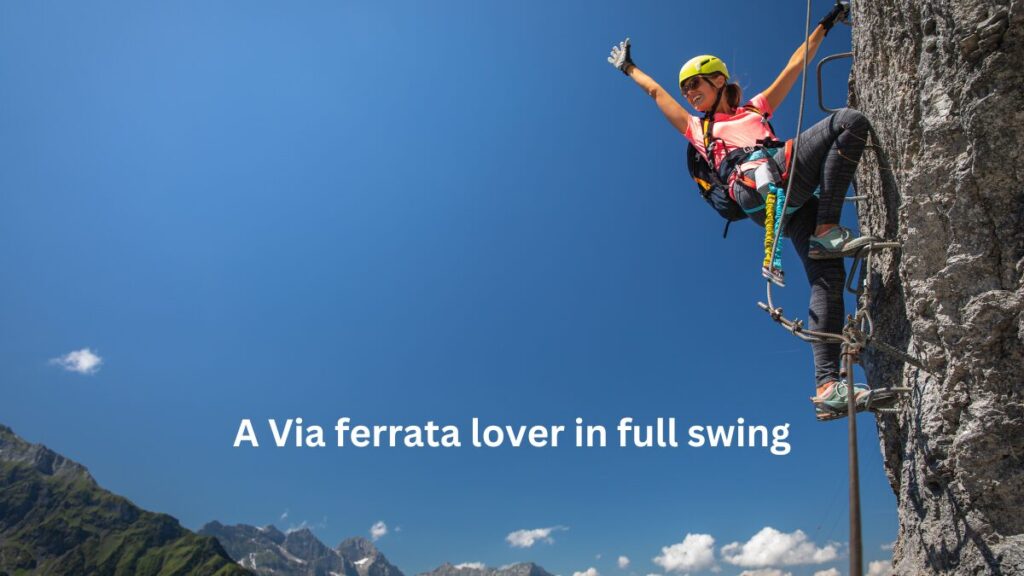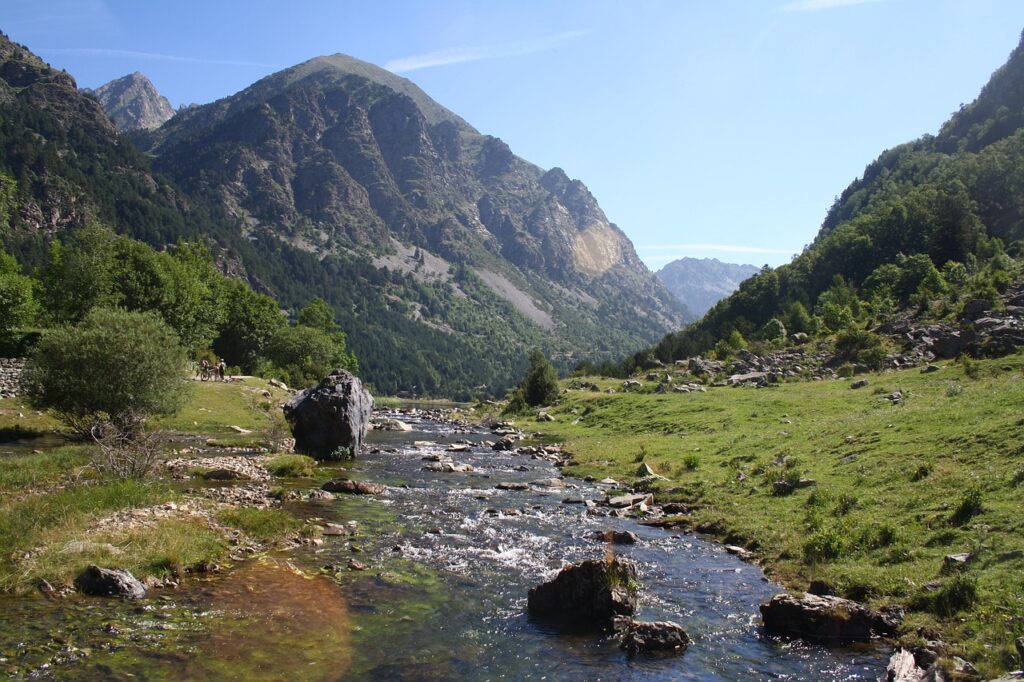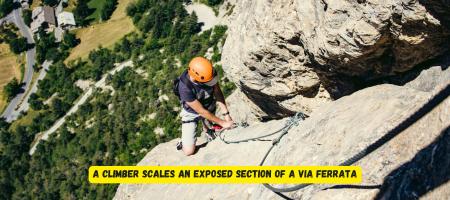Via Ferrata Cala del Molí: A Coastal Climb Like No Other
Imagine climbing iron rungs fixed into a rugged cliff face, with the deep blue Mediterranean stretching out below and the salty sea breeze brushing your face. Welcome to Via Ferrata Cala del Molí, one of the world’s few via ferratas located right on the sea, and one of the most scenic and iconic in Spain. Found along the Costa Brava in Sant Feliu de Guíxols, Catalonia, this spectacular route combines the thrill of vertical climbing with the calming beauty of the coastline—offering a unique adventure you’ll never forget.

Where Is Cala del Molí?
Cala del Molí is in Sant Feliu de Guíxols, a charming seaside town on Spain’s northeastern coast, about 100 km north of Barcelona and 35 km from Girona. The Costa Brava—“rugged coast” in Catalan—earns its name from its dramatic cliffs, hidden coves, and craggy shores, and Cala del Molí showcases all of these features in one jaw-dropping location.
The via ferrata is easy to get to. You can park in town and follow a marked coastal path (Camí de Ronda) for about 10 minutes to reach the starting point.
Click here for another incredible Via Ferrata adventure in Spain.
Route Overview
- Difficulty: K2–K3 (easy to moderate)
- Length: ~500 meters
- Elevation gain: Minimal (mostly horizontal traverses)
- Estimated time: 1.5 to 2.5 hours
- Best for: Beginners with a good fitness level, photographers, coastal lovers
What sets Cala del Molí apart is its horizontal layout. Rather than scaling up a mountain, you’re moving across a series of rocky outcrops directly over the sea. Expect a series of narrow ledges, exposed traverses, hanging bridges, and even a bit of scrambling between metal steps and cables. But don’t let the modest difficulty fool you—this is one of the most visually rewarding via ferratas you’ll ever do.
Route Highlights
1. The Start: Getting Into the Groove
The route begins gently, with a short descent to a sea-level platform. From there, you’ll clip into the first safety cable and begin your coastal journey. The iron rungs and cables are well-maintained and follow the natural shape of the rock. While the exposure to the sea below might make your knees wobble at first, the stunning views quickly take center stage.
2. First Traverse and Coves
The first few traverses take you across several small coves and inlets. The turquoise water crashes below you, and seabirds hover overhead. You’ll get used to the rhythm of clipping and unclipping your lanyards as you move across the cliff face.
3. Suspension Bridge
One of the most iconic elements of Via Ferrata Cala del Molí is the suspension bridge—a simple yet thrilling crossing made of metal cables stretched between two rocky spires. As you walk across, you’ll feel the bridge sway ever so slightly underfoot, adding just enough adrenaline to keep things interesting. It’s a perfect spot for a photo if you’re brave enough to pause and pose.
4. The Second Section
After a small rest area (great for a snack and sea view), you enter the second half of the route, which is slightly more technical. There are longer traverses and a few short, vertical sections where you’ll need both hands and a bit of leg power. That said, the route is still suitable for fit beginners or adventurous families with teens.
The second half is also more exposed and wild-feeling, especially on days when the sea is rough. Spray from the waves may reach parts of the route, so take extra care with your footing.
5. The Finish: Climbing to the Top
The via ferrata ends with a short climb back up toward the coastal path. You’ll unclip for the last time and emerge onto a flat, panoramic viewpoint—a perfect reward for your efforts. From here, you can look back and trace the winding route you just completed, now with a new appreciation for this corner of the Costa Brava.
Click here for a selection of fantastic adventures in Europe.
What Makes Via Ferrata Cala del Molí Unique
Unlike alpine or mountainous via ferratas, Cala del Molí offers something completely different: a sense of harmony between land and sea. The sounds of waves, the cries of gulls, and the scent of saltwater are constant companions. It’s one of the few routes in the world where you can climb cliffs while staring down at swimmers and snorkelers below.
The route was designed by Kurt Stegen, a Belgian mountaineer and engineer, who completed the project in 2003. It remains one of the most famous via ferratas in Catalonia and is often listed among the top outdoor activities in Costa Brava.
What to Bring
Required Gear
- Helmet
- Harness
- Via Ferrata Set (with shock-absorbing lanyards and carabiners)
- Sturdy Shoes with good grip (preferably approach shoes or trail runners)
- Gloves (optional but recommended to protect your hands from steel cables)
Optional
- Swimsuit & Towel – there are beaches nearby to cool off post-climb
- Water & Snacks
- Small backpack with a secure chest or waist strap
- GoPro or camera (helmet mount or chest strap)
Click here for a once in a lifetime European adventure.
Safety Tips
- Check the Weather – The route is closed during bad sea conditions or strong winds for safety. Avoid after rainfall, as the rocks can get slippery.
- Start Early – The route can get crowded, especially during summer. Mornings offer cooler temps and softer light for photos.
- Respect Closures – Authorities occasionally close the route for maintenance or environmental reasons. Always check with the local tourist office or climbing forums beforehand.
- No Jumping – While it might be tempting to leap into the water, cliff jumping is not allowed or safe along the route.
- Go with a Guide – If you’re new to via ferratas or don’t have gear, book a guided tour. Many local companies offer half-day excursions with equipment included.
Click here for a selection of menswear suitable for outdoors activities.
Post-Climb Activities
After the route, reward yourself with a relaxing break in Sant Feliu de Guíxols. You can enjoy:
- Beaches like Platja de Sant Pol or Cala Ametller
- Fresh seafood at local restaurants overlooking the marina
- A stroll along the Camí de Ronda, a coastal path that winds through pine forests and hidden coves
- Visiting the Monastery of Sant Feliu, a historical gem in town

Conclusion
Via Ferrata Cala del Molí is much more than a climbing route—it’s an experience that blends adventure, nature, and unforgettable views. Whether you’re a first-time via ferratista or a seasoned climber looking for a change of pace, this seaside gem offers a perfect mix of challenge and serenity.
With the Mediterranean Sea beneath your feet and the Costa Brava’s wild cliffs surrounding you, Cala del Molí isn’t just a climb—it’s a moment of magic.


